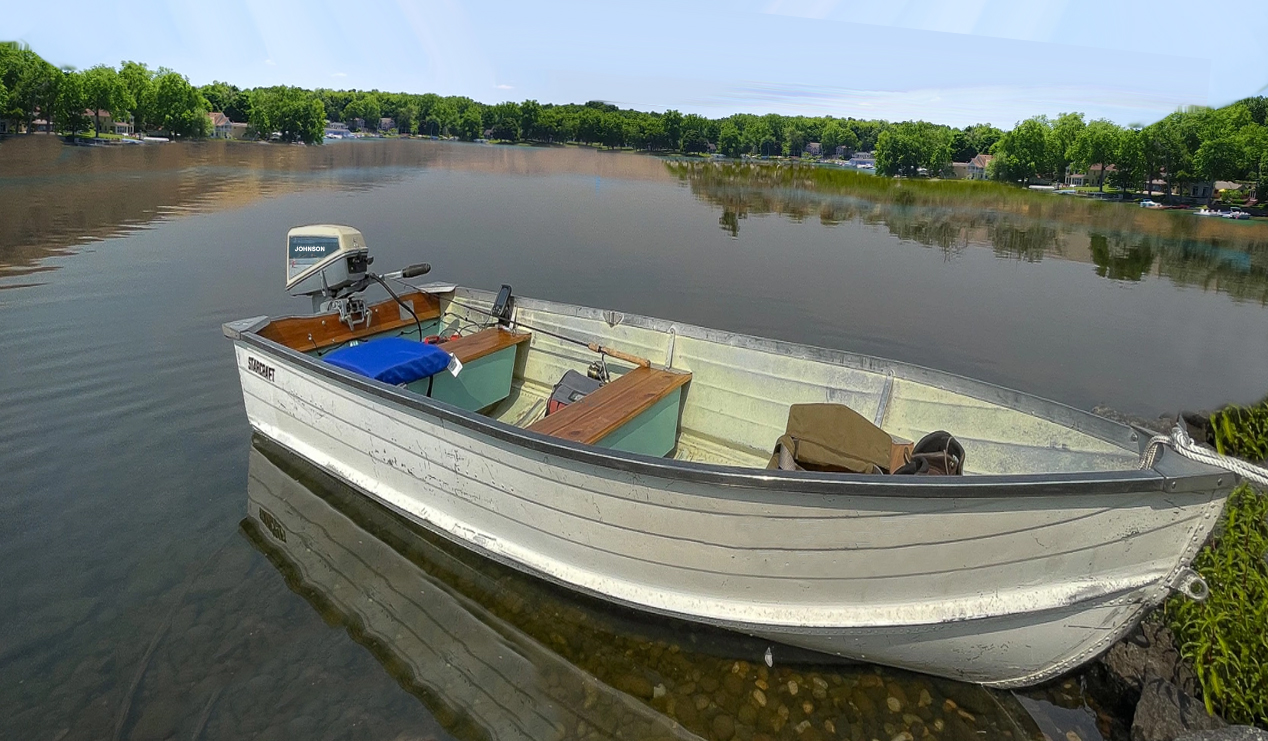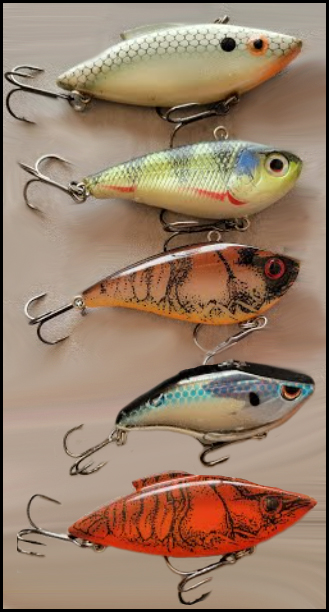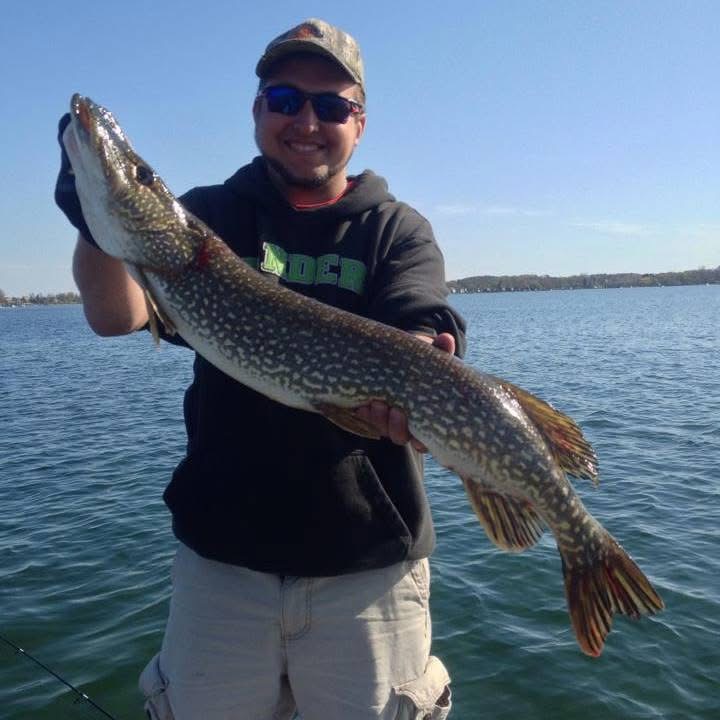⚡ TL;DR
You don't need expensive gear to catch northern pike - just the right tactics. This real-world guide covers proven techniques like using trolling to locate fish, then switching to targeted casting, plus essential tips for depth control, lure selection, and finding the best spots. Simple gear, smart strategy, and patience will put more pike in your boat than any high-dollar setup.
It was one of those days in Michigan. The ones where the sun's out, but there's still a bite in the air. The kind of day where you're comfortable in a hoodie and shorts. It was one of those perfect late spring days when my buddy Jacob Yono and I decided to hit Walled Lake in Novi to chase some pike.
We weren't in some fancy, high-dollar bass boat. We were in my workhorse: a 14-foot aluminum StarCraft. The kind of boat you can beat up and not feel bad about it. Pushing us along was my 1962 Johnson 9.5 horsepower outboard. That old motor has been through it all, but it still starts on the second pull and trolls down to a snail's pace. It's all you really need.

A reliable 14-foot aluminum boat and a small outboard are all it takes to get on the pike.
Walled Lake can be crystal clear, and on a calm, sunny day like this one, you could see the bottom in 20 feet of water. It makes you feel like you have an unfair advantage, watching the weed beds and sandy spots go by. We weren't just out for a boat ride, though. We were hunting for water wolves. Northern Pike.
My setup was pretty standard for chucking big baits. I had a medium-heavy baitcasting rod with some decent backbone, paired with a tough-as-nails baitcasting reel spooled with braid. And the most important part: a steel leader. If you're not using a wire leader for pike, you're just donating lures to the lake. Their teeth will shred mono or fluoro like it's nothing.

Tied onto that leader was a KVD lipless crankbait. I know -it's a bass lure, but pike absolutely hammer them. The color was a little weird - lavender. Sometimes, you gotta throw something they haven't seen a thousand times. In that clear water, a flash of purple and silver can be just the ticket to trigger a strike.
We were working a classic pike spot... That stretch of weed line looked absolutely prime. Perfect ambush territory. This is where a good angler needs to know when to switch tactics. Trolling is fantastic for covering water and locating active fish, but when you find a spot that just screams 'pike,' you need to work it more thoroughly than one quick pass allows. A single trolling run might miss a fish that isn't perfectly positioned or ready to strike at that exact moment.
'I'm gonna pick this spot apart,' I told Jacob. I cut the motor completely, letting the boat's momentum carry us quietly along the edge. This way, we could make multiple, precise casts right into the sweet spots along the weed wall instead of just buzzing by once. I whipped the rod back and launched that crankbait as far as I could. The lure hit the water with a *plop*. Now for the part that separates just fishing from catching!
I started counting. "One... two... three..." all the way to ten.

A lipless crank sinks about a foot per second. So, a ten-second count puts my lure about 10 feet down. In 20 feet of water, that meant it would be cruising right over the tops of the weeds. It's the perfect spot. Any pike hiding down there would look up and see an easy meal swimming right through their kitchen.
I clicked the reel into gear and started a slow, steady retrieve. You want to feel the bait vibrating through the rod. It's a steady *thump-thump-thump* that lets you know the lure is working right.
I didn't even get five cranks on the handle.
The rod didn't just load up; it was nearly ripped out of my hands. The strike was a violent, jarring *SLAM*. There was no doubt what it was.
"Fish on! Big one!" I yelled, trying to keep my composure as the drag started screaming.
The fish peeled line off the reel like it was nothing, heading for deep water. This is the chaos you live for. A hundred feet back, a big, green torpedo of a fish thrashed on the surface, shaking its head trying to throw the hook. Then it dove again. I kept the pressure on, letting the rod do the work, absorbing the shock of its powerful runs and head shakes. You can't just crank a big pike in; you have to play it. Gain line when you can, and let it run when it wants to.
Jacob was on standby with the net, totally focused. "Keep his head up! Don't let him get in the weeds!" he coached.
After a solid five-minute battle of give-and-take, the fish started to tire. I steered its head towards the surface and guided it toward Jacob. He made a perfect scoop, and the heavy fish hit the bottom of the boat with a solid *thud*.

It was a gorgeous pike. A thick, healthy fish, probably close to 30 inches. A great catch. But as I went to get the lure out with my long-nosed pliers, I saw the problem. In its aggression, the pike had completely inhaled the KVD crankbait. The hooks were deep in its throat, and blood was already flowing from its gills.
It's a tough part of the sport. A gill-hooked fish is a goner. There's no point in throwing it back to die. It happens.
"Well, I guess we know what's for dinner," I said to Jacob. It's not what you hope for when you plan on catch-and-release, but the responsible thing to do is to keep it and eat it. Wasting a fish like that is the real crime. We dispatched it quickly and got it on ice.
The No-Nonsense Pike Playbook
That one fish pretty much sums up how to find and catch pike. It's not complicated, but you have to do the little things right. If you want to get in on the action, here's the breakdown.
1. Essential Gear
You need a decent variety of lures. You can't go wrong with the classics. A big red-and-white Daredevle spoon is probably responsible for more pike catches than any other lure in history. Large stick baits like a Bomber Long A or a Rapala Husky Jerk are deadly. Big-bladed spinnerbaits also work great. Pay attention to the water. In clear water, go with natural colors—perch, walleye, silver, white. In stained or murky water, break out the bright stuff—chartreuse, firetiger, and hot orange.
Two other non-negotiable items are long-nosed pliers and a large landing net. A pike's mouth is full of sharp teeth and trying to unhook one without pliers is asking for trouble. Likewise, trying to land a thrashing pike full of treble hooks by hand is a recipe for disaster. A good, large net with a long handle makes the final moments of the fight safer for you and the fish.
2. Find the Right Spot (Location, Location, Location)
Pike are ambush predators. They hang out where they can hide and wait for food.
Don't waste your time trolling over a big, barren mudflat. Look for structure. Weed lines are a number one spot. Drop-offs, underwater points, and sunken islands are also pike magnets. If you don't have a fish finder, use your eyes. Polarized sunglasses are essential. They'll help you spot the dark patches of underwater weeds. Look for where the weeds end and the sand or rock begins. That edge is a dinner table for pike.
3. Get Your Lure in the Zone (Depth Control)
This is the most critical part. Your lure is useless if it's 15 feet above the fish. You need to know where your bait is running. My "countdown" method is a simple way to do it. Figure out how fast your lure sinks, count it down, and you're in business. For more precision, a line-counter reel is a fantastic investment. It tells you exactly how much line you have out. You can look up dive charts for popular lures online to see how deep they run with, say, 100 feet of line out. The goal is to get your lure running just above the weeds or the bottom. You want to tickle the tops of the cover, not drag it up.
4. Set the Right Pace (Trolling Speed)
My old Johnson is great for this because it can go super slow. Your trolling speed should be just fast enough to get your lure to work properly. For most crankbaits and spoons, that's somewhere between 1.5 and 2.5 MPH. Too slow, and it's just a dead piece of metal. Too fast, and it'll look unnatural. If you don't have a fish finder with GPS, just use an app on your phone to check your speed. Watch your rod tip. You should see it steadily bouncing or vibrating from the lure's action. If it's not, you're going too slow. If it feels like it's going to fly out of your hands, you're probably going too fast.
5. Know When to Stop Trolling (and Start Casting)
This might be the most important tip of all, and it's exactly what led to that pike in the boat. Think of trolling as your search party. You use it to cover long stretches of shoreline or big flats efficiently. But when your search party finds something—either you get a strike, you mark a big fish on the finder, or you just see a spot that looks too good to be true—don't just keep on driving. Kill the motor. Use your trolling motor or just drift to hold your position. Pick up your casting rod and work that specific area over. Fan cast to it from different angles. Let your lure sink to different depths. By stopping to cast at high-percentage spots, you can pull multiple fish from a small area that you might have missed with a single trolling pass. The trolling finds the fish, but targeted casting is often how you catch them.
🎯 Quick-Hit Pike Plan
- Gear: Rod, reel, steel leader, pliers, and a large net are non-negotiable.
- Location: Focus on weed lines, drop-offs, and underwater points.
- Depth: Use a countdown or line-counter to keep your lure just above the structure.
- Speed: Troll at 1.5 - 2.5 MPH, just enough to feel the lure working.
- Lures: Carry spoons, crankbaits, and stickbaits in both natural and bright colors.
- Strategy: Troll to find fish, cast to catch fish.
Later that night, I filleted the pike, carefully removing the tricky "Y" bones. We fried it up in some seasoned flour. It was delicious - a clean, white meat that you just can't beat when it's fresh.
That's all there is to it. Trolling for pike is a puzzle. You just have to put the pieces together. Find the right spot, get your lure to the right depth, at the right speed, and hang on tight. You don't need a $50,000 boat. All you need is a reliable motor, a few key lures, and a good game plan. Now get out there and catch one.